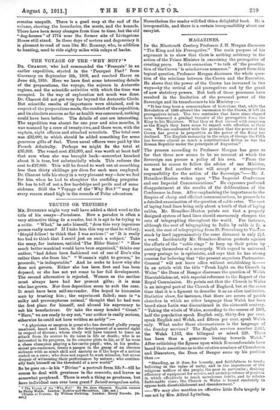HISTORY OF THE LINLITHGOW AND STIRLINGSHIRE HIINT.t MR. RIITHERPHRD may
be congratulated on having made an interesting contribution to the history of foxhunting. His book is well written, he has worked laboriously in collecting material from scattered sources, and lie has illustrated his volume with a profusion of old pictures and modern photo- graphs. The hunt dates back to about 1775, when Sir William Cunyngbame was Master ; and the history is continuous with a short break from 1869-77, when the Lothians Hunt in- vaded the country. The records of the Hunt and the Hunt Club have been fairly well preserved, and old diaries, news- papers, and scrapbooks have supplied many curious facts. Mr. Rntherfurd, as honorary secretary, has had access to everything that exists. It is worth noting that the history of a Scottish pack does not appear to differ much from southern hunts whose history has been written. But it is surprising to find a reference to the practice of capping as early as 1847. The country hunted by this pack to the south of the Firth of Forth, and not far from Edinburgh, was at one time considered the best in Scotland, and much of it still The Charm of Copenhagen. By Ethel C. Hargrove. London: Methuen and Co. 6s.] 1-The History of the Linlithgow and Stirlingshire Hunt. By James H. Maher- turd, W.B. London: W. Blackwood and Sons. [25a. net.]
remains unspoilt. There is a good map at the end of the volume, showing the boundaries, the meets, and the kennels. There have been many changes from time to time, but the old " dog-houses " of 1774 near the former site of Livingstone House still stand. In these days of motors and degeneracy it is pleasant to read of men like Mr. Ramsay, who, in addition to hunting, used to ride eighty miles with relays of hacks.







































 Previous page
Previous page